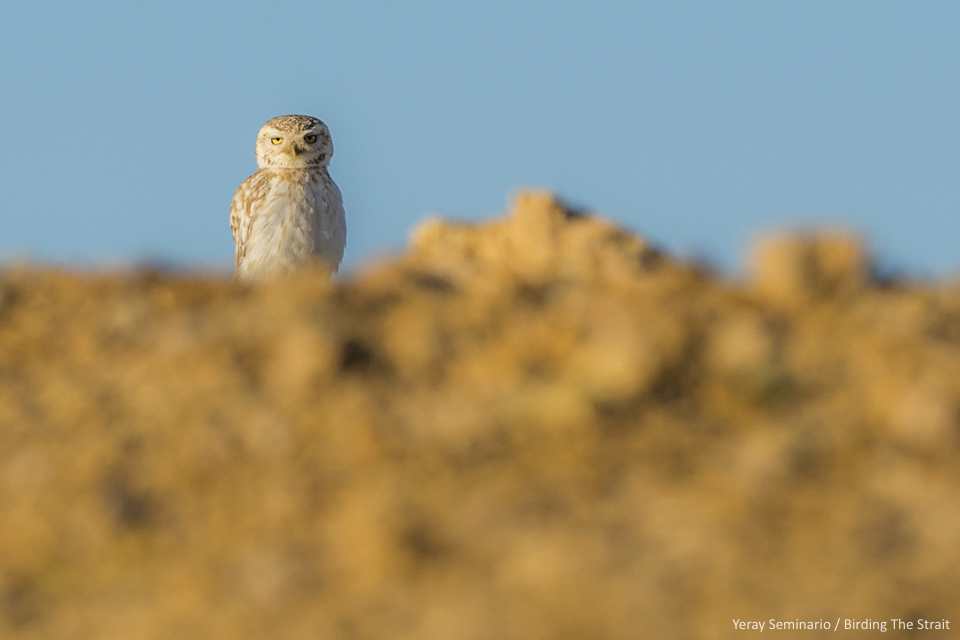
We have just returned from a thrilling wildlife expedition into one of the most remote regions of the Western Palearctic: the Western Sahara. More precisely, we have spent 8 days exploring the wildlife and landscapes within the Dakhla, Aousserd and Bir Anzarane triangle. This has led us to ridges of dunes, extensive mudflats, forested wadis, endless steppes, rock massifs, unexpected waterholes and even off into the Atlantic Ocean. On this post we summarize some impressions and highlights of this Birding Trip to the Western Sahara.
Our second Birding Trip to the Western Sahara
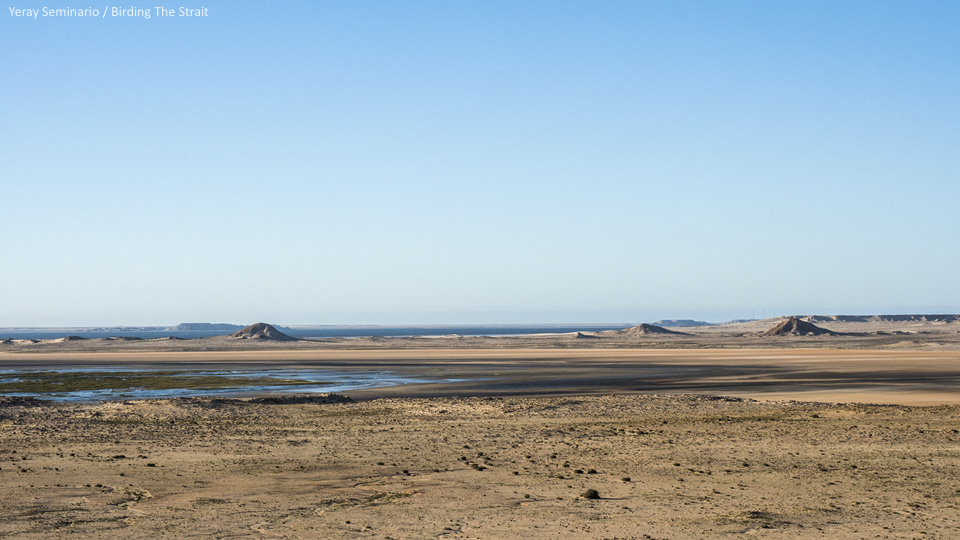
Back in February 2016 we were invited by the Dakhla Attitude Hotel to a fam trip in the region. This was a memorable experience and we have been eagerly looking forward to returning since then. On this link you can read the trip report of our previous trip to the Western Sahara, including a large selection of pictures.
During our 2019 expedition we wanted to relocate key sites and target species, explore new trails getting deeper into the desert, reinforce our collaboration with local experts and logistics, and conduct nocturnal surveys for mammals. On this last (but not least) matter, our primary target was to observe the Sand Cat Felis margarita. This is probably the most elusive and least known feline in the Palearctic.

In doing so we have camped in the desert and slept in jaimas (nomad tents) belonging to Saharawi camel herders, but also in cozy hotels in Dakhla. As for the transportation, we have used hired passengers cars and 4×4 with local expert drivers to safely get off the beaten track into the desert. Moreover, we used a boat to reach the most inaccessible corners of the huge Bay of Dakhla.
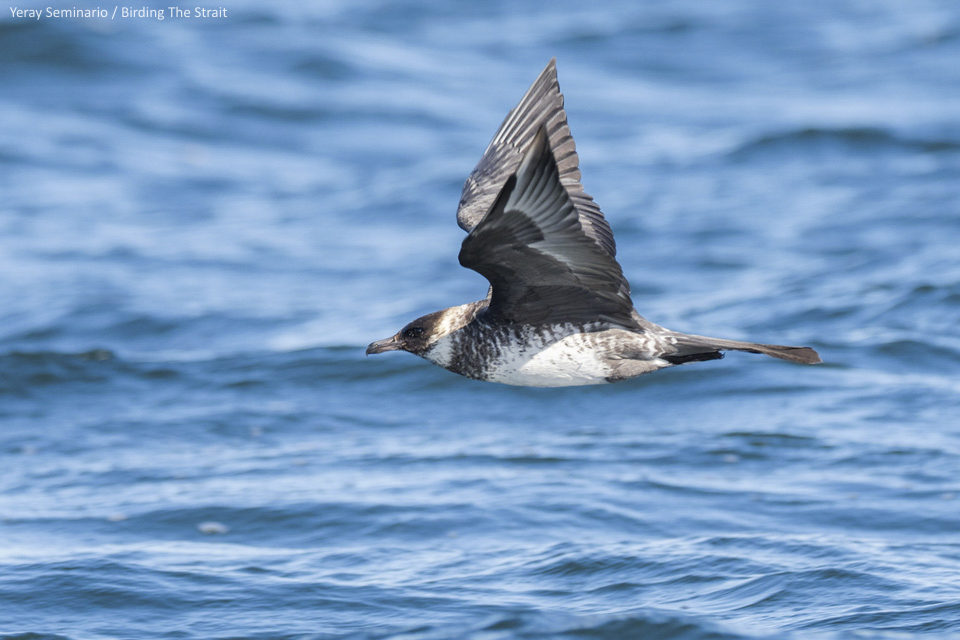
Using eBird in the Western Sahara
As usual during our Birding The Strait trips, we have invested a considerable effort to systematically upload all the resulting ornithological information to eBird, including pictures and sound recordings. This is our humble contribution to citizen science. As keen eBirders we have found it very exciting to complete bird checklists in some regions which have barely, if at all, being surveyed before. This way, all our records are accessible for the public in our eBird accounts, which can be consulted here (Yeray) and here (Javi).
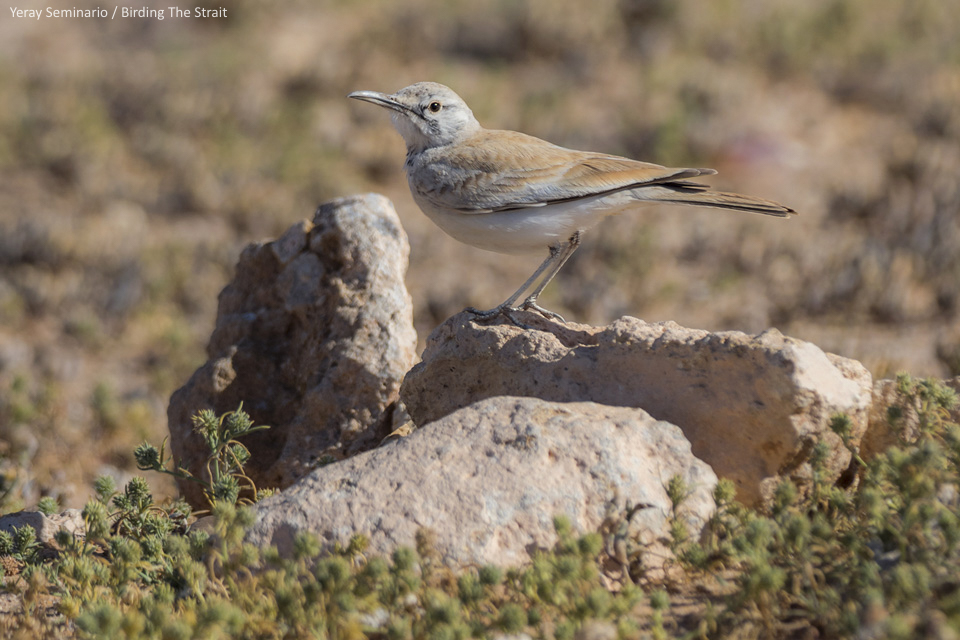
The Desert environment and its changing conditions
Birding in semi-desert environments always implies a high degree of uncertainty and surprise. Here, rainfall in precedent months and the resulting plant coverage is the main driving force. This way, some of the best and richer birding sites we found in 2016, such as the eastern end of the Aousserd road and Oued Jenna were very dry and quiet this time. In turn, the regions nearer the coast held a greener plant coverage and several flooded and very productive waterholes!
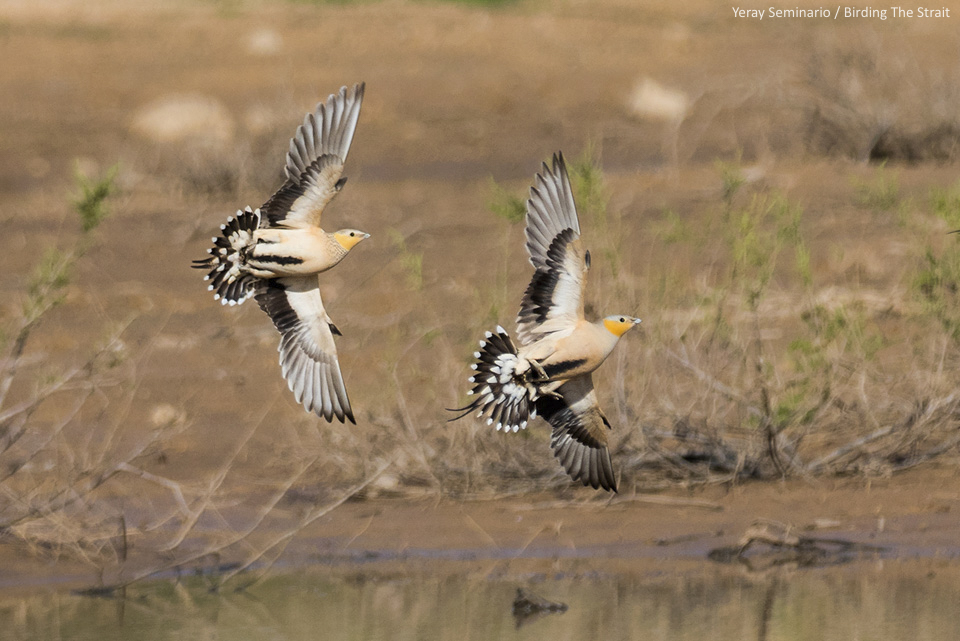
Accordingly, some species which we struggled to find in 2016 were amongst the most widespread this year. This was the case of the Temminck’s Lark, for instance. In turn, the Black-crowned Sparrow-Lark was more scarce, although still well represented. Besides, the local specialties, like Saharan Dunn’s Lark and Cricket Longtail seemed to be in similar numbers. During this trip we missed some important targets including Sudan Golden Sparrow and Golden Nightjar. However, we enjoyed unbeatable observations of Pale Rock Martin, African Royal Tern, Spotted and Crowned Sandgrouses, and Houbara Bustard, to name but a few!
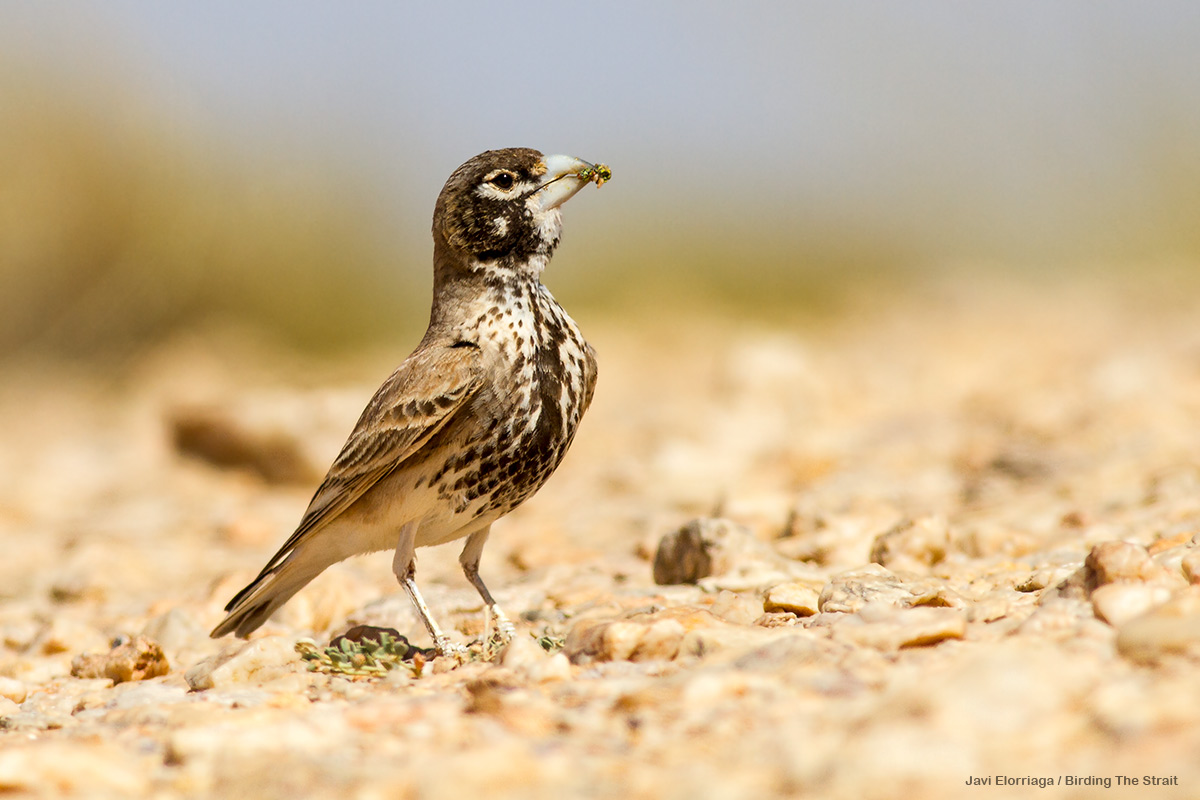
In this trip we have recorded a total of 86 bird scpecies, and a grand total of 111 considering our two visit to the Dakhla-Aousserd region.
Birding Highlights
Aside from the birds mentioned, other birding highlights during our trip included:
- A gang of Fulvous Chatterers breaking into our campsite in Oued Jenna to feed on our supplies and drink our water!
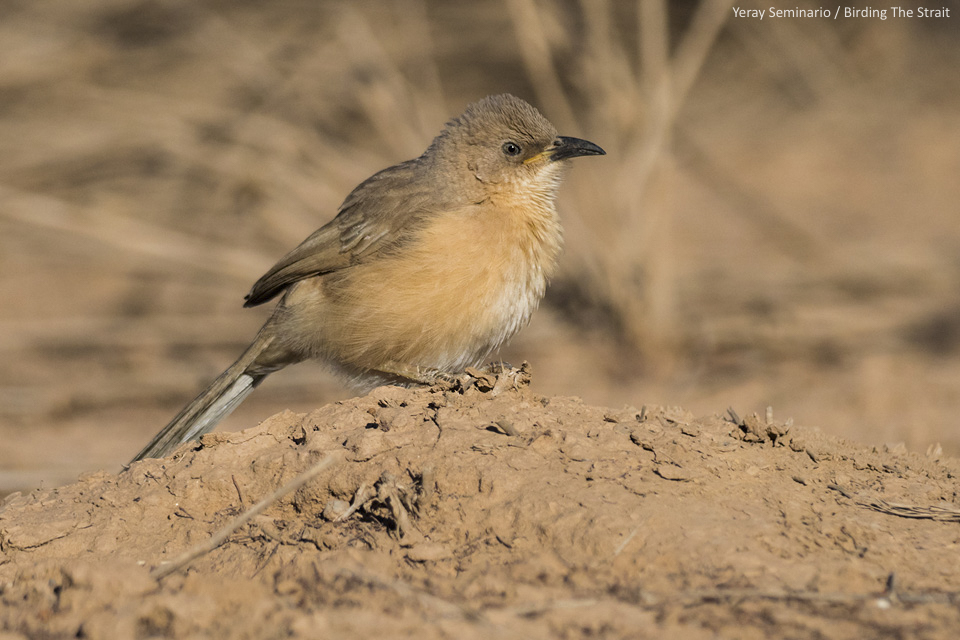
- A flock of 5 Pale Rock Martins flying and contact-calling overhead.
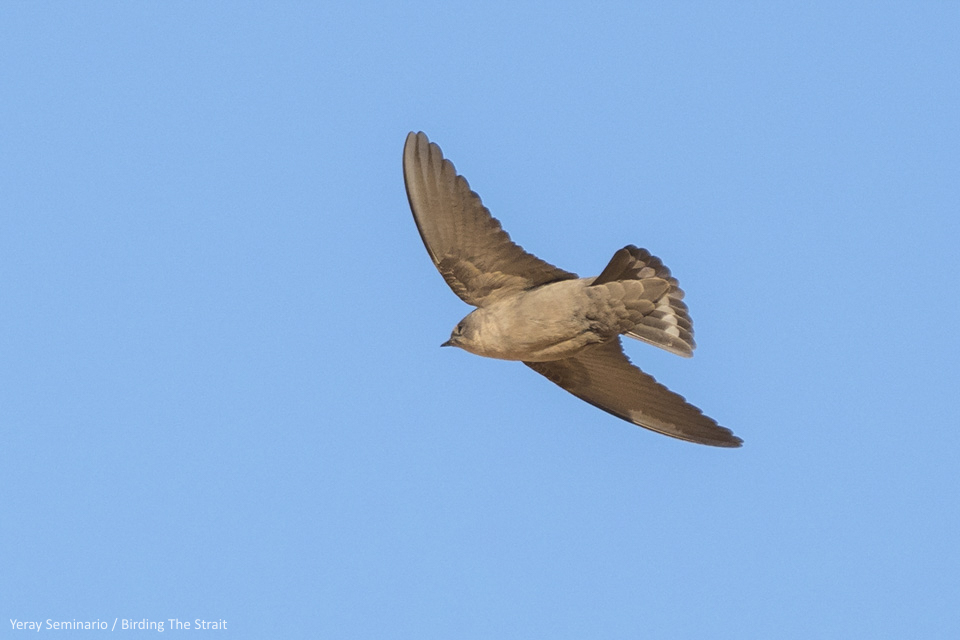
- A male Houbara Bustard literally in the middle of nowhere.
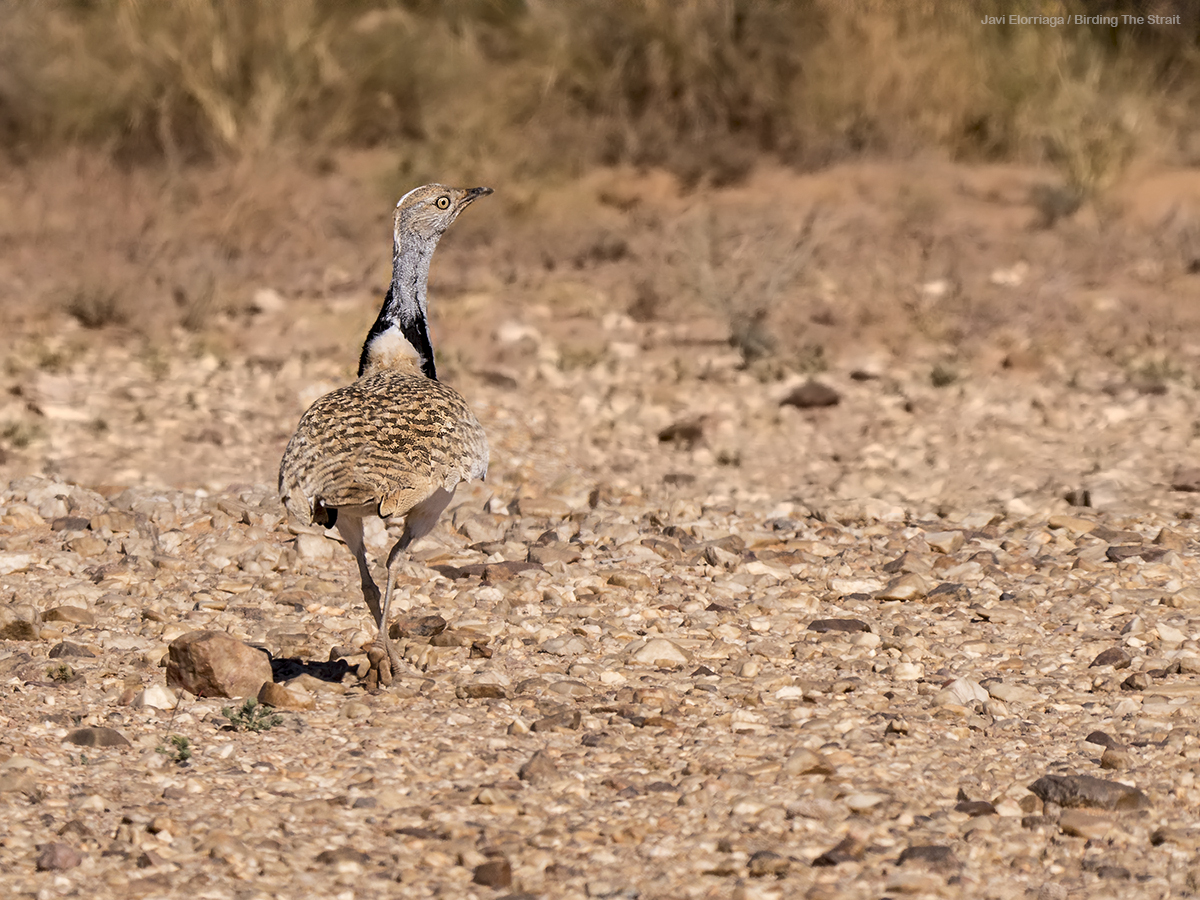
- Two Pharaoh Eagle-Owls illuminated by our torches
- A pair of Lanner Falcons landing by a waterhole as we were watching Spotted and Corwned Sangrouses drinking.
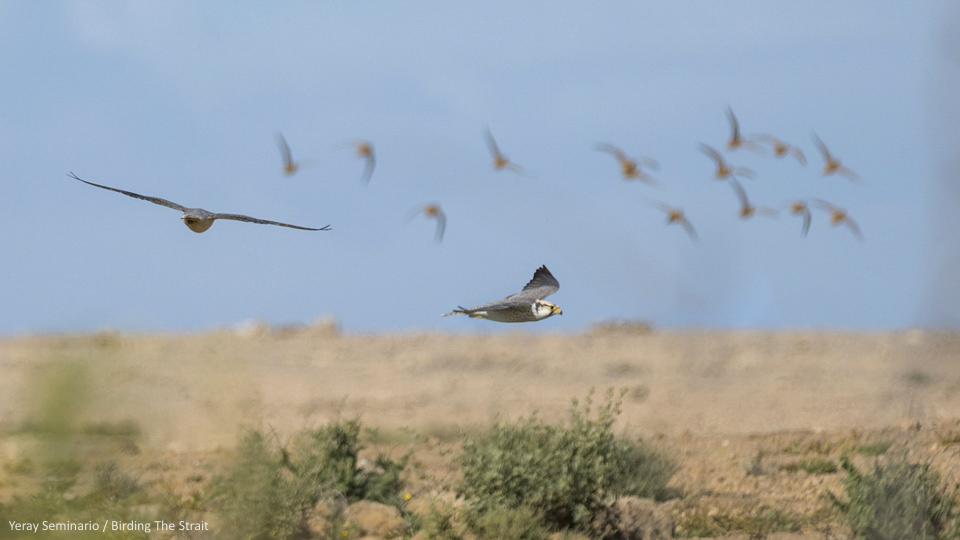
- Several family groups of Cream-coloured Courses.
- Up to 8 different Cricket Longtails at Oued Jenna.
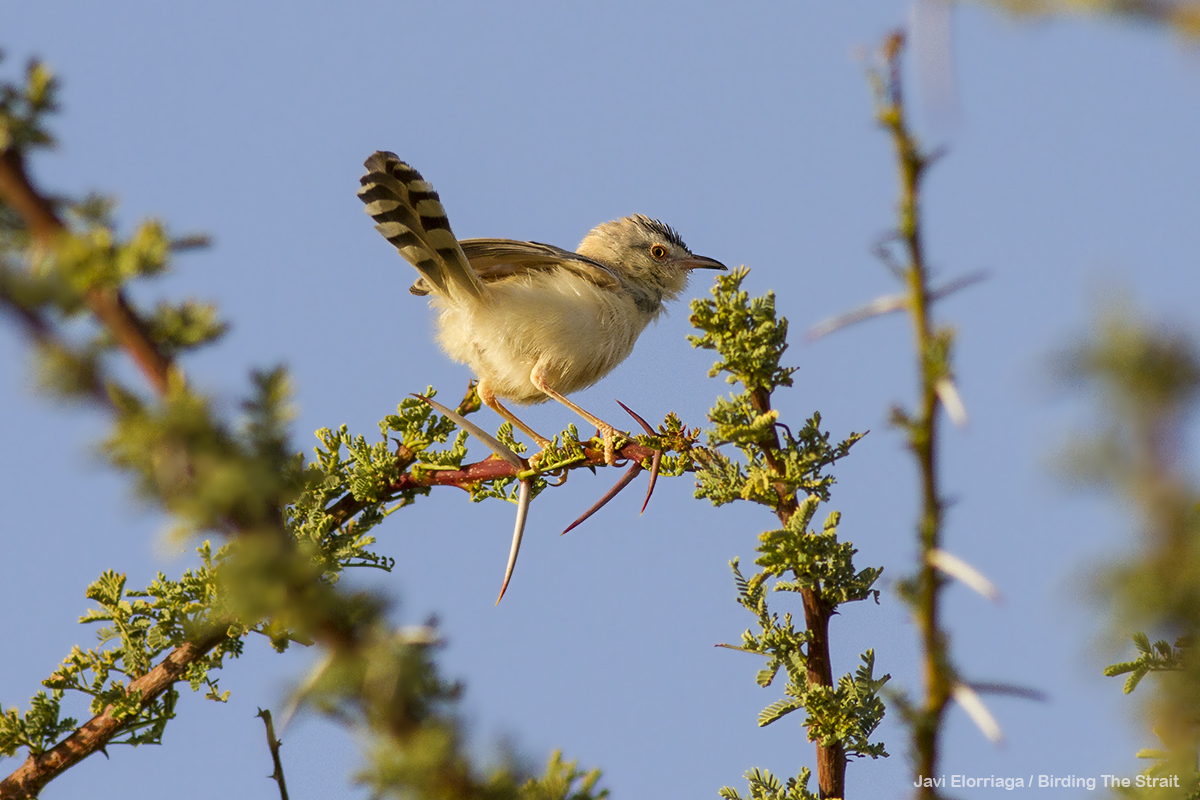
- Large groups of Sandwich, Caspian, Common and African Royal Tern observed while navigating in the Bay of Dakhla with impressive sand dunes in the background.
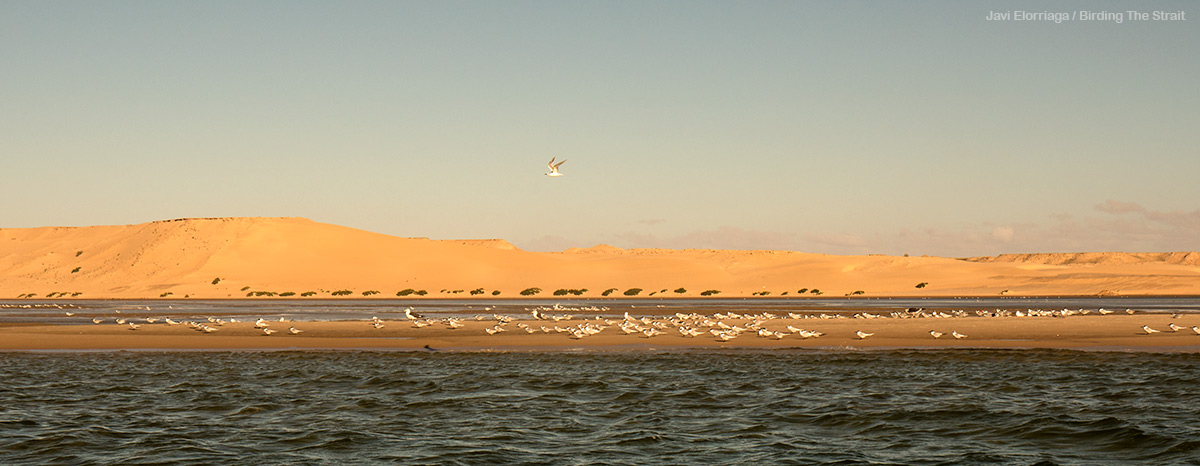
- We enjoyed observing and photographing the varied array of Larks and Wheatears in their different plumages and variations, namely: Desert, Black, Black-eared, Northern, White-crowned and Red-rumped Wheatear; and Short-toed, Desert, Bar-tailed, Dunn’s, Black Crowned, Thick-billed, Temminck’s, Greater Hoopoe and Maghreb (Crested) Lark.
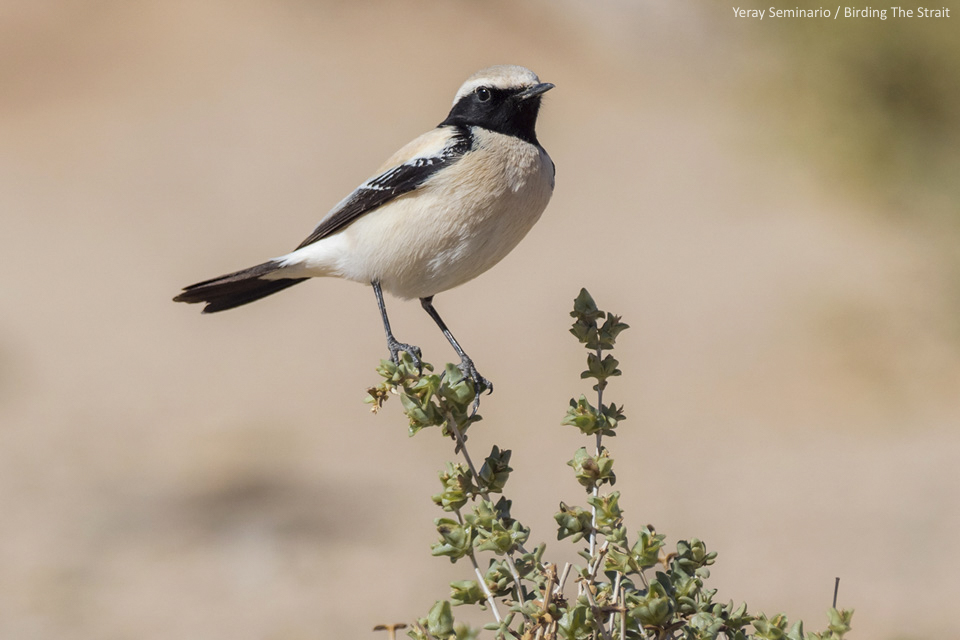
The observation of two putative Maghreb Larks North of Bir Anzarane deserves special mention. Indeed, the taxonomic rank of the so-called “long-billed” Crested Larks is nowadays unclear. Interestingly, the presence of birds belonging to the senegalensis group of the Crested Lark in the region has been proposed. On this eBird checklist we have uploaded photos of two different “long-billed” larks, including a sound recording. We have provissionally asigned the records to Maghreb Lark Galerida macrorhyncha, but see also Qninba et al. 2019. Are we facing yet another case of a typically Sahelian taxa expanding North into the Western Palearctic? Comments welcome!
Interestingly, we found two Corn Buntings around a waterhole not far from Dakhla. Much to our surprise, we later got to know that this was among the very first reports for the species in the region!
Mammal Watching
Mammals deserve special mention here. To our pleasure, we managed to find the sought-after Sand Cat! Indeed, we got to find this precious desert creature in each of our night surveys. Amazingly one of the encounters involved a Sand Cat hidden in low bushes a couple of meters from us! Never in our wildest dreams did we expect such an amazing observation.
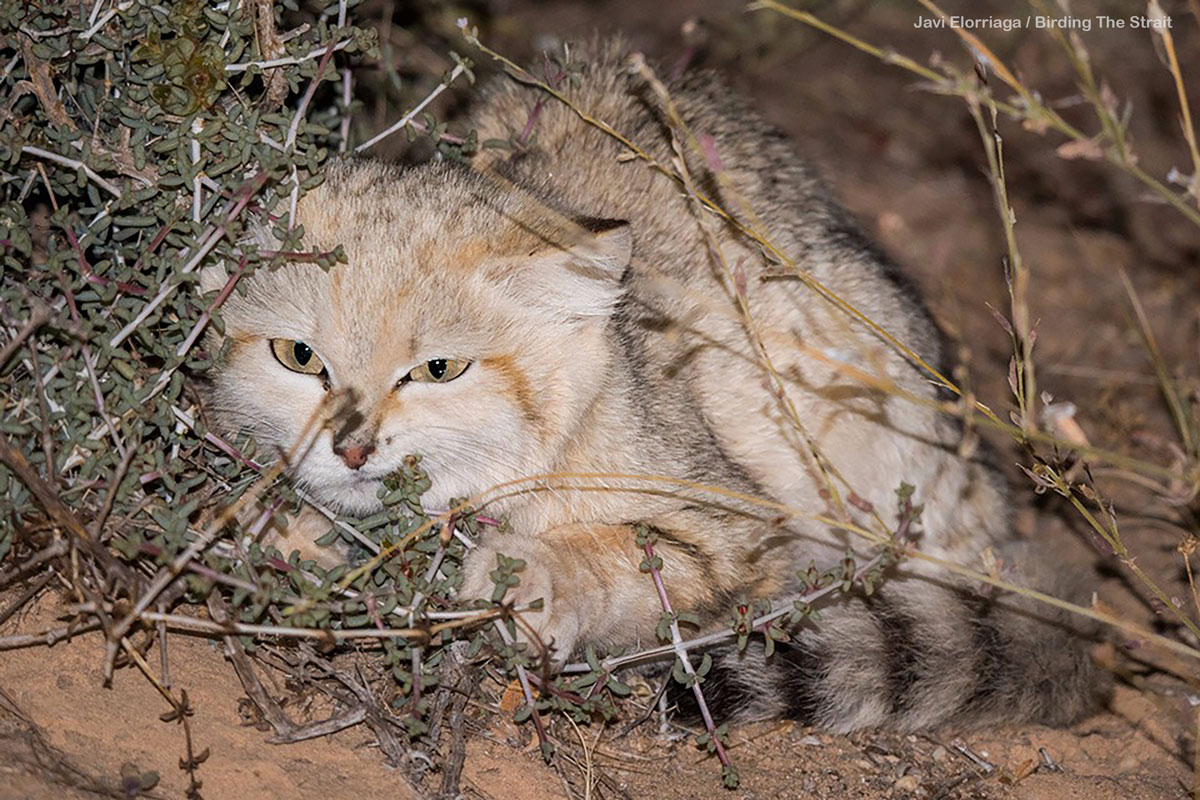
But that was not it! An African Golden Wolf peacefully standing by its lair in the middle of the day made another highly unlikely target accomplished. In following nights, we had two additional encounters with wolfs while using torches from the car (stay tuned for the forthcoming nocturnal footage).
The list of mammas was completed with one Fennec, two Rüppel’s Foxes, African Savanna Hare, gerbils and the skull of a Saharan Striped Polecat.
We will return!
We are fascinated by the wildlife, landscape and tranquillity of this region. As expected in such an arid region, the density and diversity of birds is comparatively low. However, the interest and uniqueness of the avian community at the Western Palearctic level is out of question. The sense of wilderness greatly enhances the experience and the possibility of “coming through something new and unexpected” brings birding to a higher level. Moreover, the high chances of connecting with mammal species hard to find in other regions of the Maghreb is, no doubt, an additional highlight.
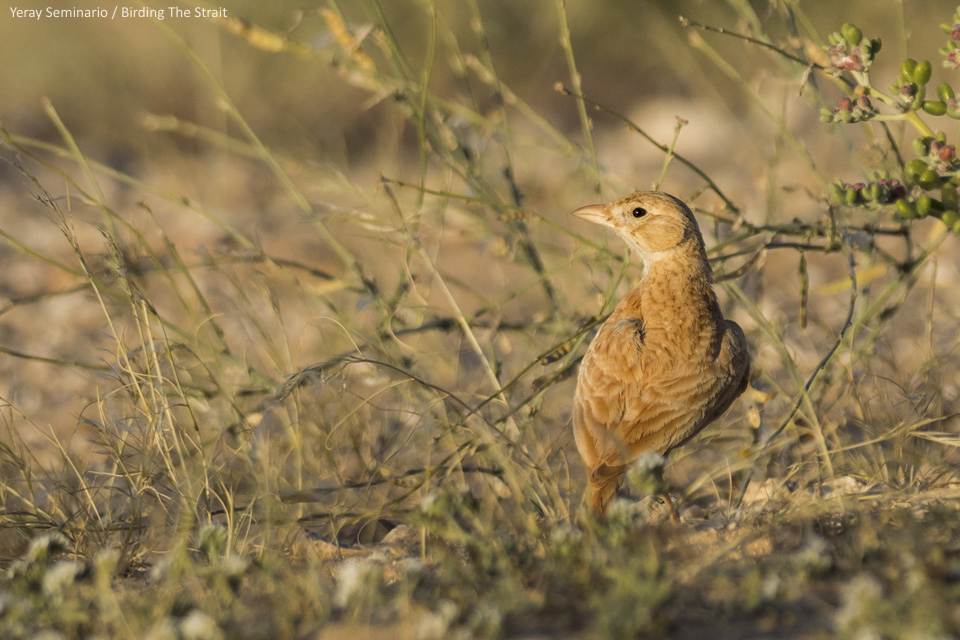
Thanks to the experience on the wildlife and logistics gathered in our two expeditions to the region, we are already working to offer a especially dedicated tour to the Western Sahara.
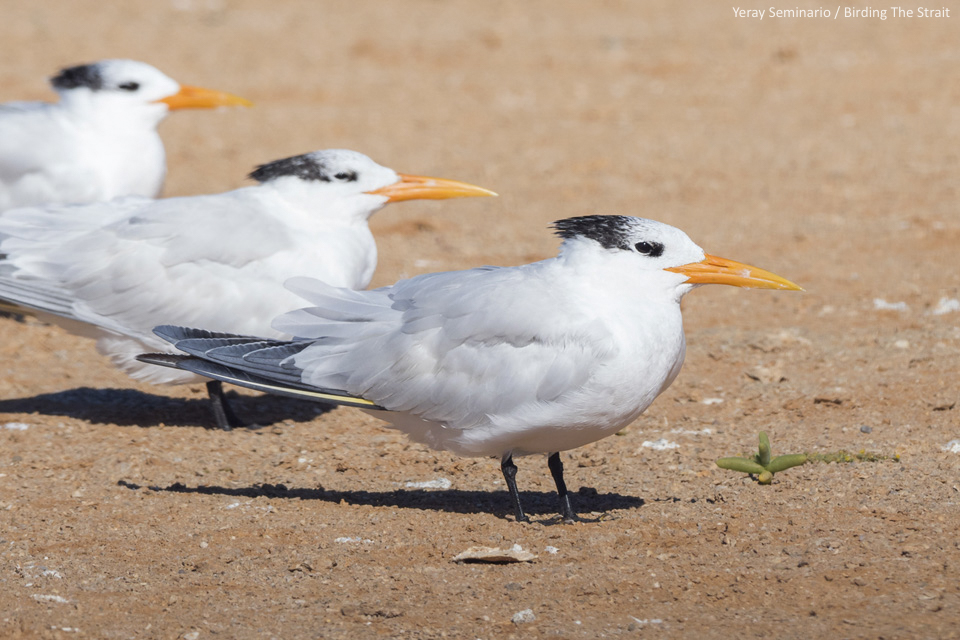
Stay tuned for the upcoming information and more pictures and videos!
We thank Patrick Bergier and Go-South for the valuable source of information they provide.